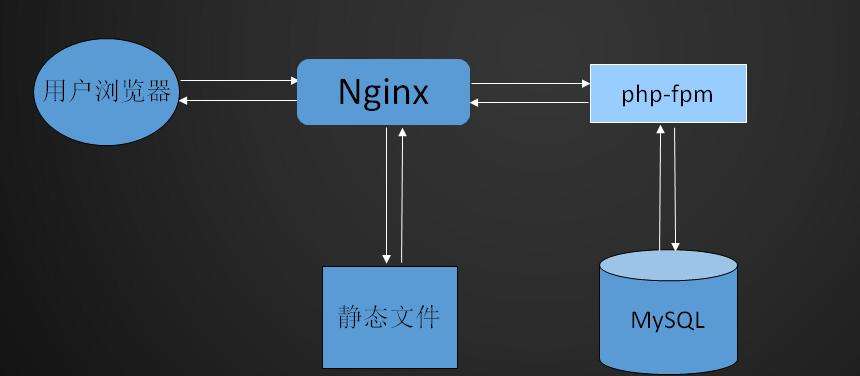Language Guide (proto3)&Google Protocol Buffer 的使用和原理
官方文档:https://developers.google.cn/protocol-buffers/docs/proto3
本来想自己翻译下 发现网上已经有很多比较优秀的翻译 就不班门弄斧了
https://www.cnblogs.com/tohxyblog/p/8974763.html
https://www.cnblogs.com/sanshengshui/p/9739521.html
https://cloud.tencent.com/developer/article/1504465
这里转载一个 https://www.ibm.com/developerworks/cn/linux/l-cn-gpb/index.html 关于原理的 稍微深入学习一下
用protoc来做一个本地的例子
目录结构如下
第一步:把addressbook.proto文件生成对应语言的结构库文件
// See README.txt for information and build instructions.
//
// Note: START and END tags are used in comments to define sections used in
// tutorials. They are not part of the syntax for Protocol Buffers.
//
// To get an in-depth walkthrough of this file and the related examples, see:
// https://developers.google.com/protocol-buffers/docs/tutorials
// [START declaration]
syntax = "proto3";
package pb;
import "google/protobuf/timestamp.proto";
// [END declaration]
// [START java_declaration]
option java_package = "com.example.tutorial";
option java_outer_classname = "AddressBookProtos";
// [END java_declaration]
// [START csharp_declaration]
option csharp_namespace = "Google.Protobuf.Examples.AddressBook";
// [END csharp_declaration]
// [START messages]
message Person {
string name = 1;
int32 id = 2; // Unique ID number for this person.
string email = 3;
enum PhoneType {
MOBILE = 0;
HOME = 1;
WORK = 2;
}
message PhoneNumber {
string number = 1;
PhoneType type = 2;
}
repeated PhoneNumber phones = 4;
google.protobuf.Timestamp last_updated = 5;
}
// Our address book file is just one of these.
message AddressBook {
repeated Person people = 1;
}
// [END messages]
1
protoc -I . --go_out=. addressbook.proto
编写writer add_person.go
package main
import (
"bufio"
"fmt"
"io"
"io/ioutil"
"log"
"os"
"strings"
"github.com/golang/protobuf/proto"
"Dev/protobuffer/pb"
)
func promptForAddress(r io.Reader) (*pb.Person, error) {
// A protocol buffer can be created like any struct.
p := &pb.Person{}
rd := bufio.NewReader(r)
fmt.Print("Enter person ID number: ")
// An int32 field in the .proto file is represented as an int32 field
// in the generated Go struct.
if _, err := fmt.Fscanf(rd, "%d\n", &p.Id); err != nil {
return p, err
}
fmt.Print("Enter name: ")
name, err := rd.ReadString('\n')
if err != nil {
return p, err
}
// A string field in the .proto file results in a string field in Go.
// We trim the whitespace because rd.ReadString includes the trailing
// newline character in its output.
p.Name = strings.TrimSpace(name)
fmt.Print("Enter email address (blank for none): ")
email, err := rd.ReadString('\n')
if err != nil {
return p, err
}
p.Email = strings.TrimSpace(email)
for {
fmt.Print("Enter a phone number (or leave blank to finish): ")
phone, err := rd.ReadString('\n')
if err != nil {
return p, err
}
phone = strings.TrimSpace(phone)
if phone == "" {
break
}
// The PhoneNumber message type is nested within the Person
// message in the .proto file. This results in a Go struct
// named using the name of the parent prefixed to the name of
// the nested message. Just as with pb.Person, it can be
// created like any other struct.
pn := &pb.Person_PhoneNumber{
Number: phone,
}
fmt.Print("Is this a mobile, home, or work phone? ")
ptype, err := rd.ReadString('\n')
if err != nil {
return p, err
}
ptype = strings.TrimSpace(ptype)
// A proto enum results in a Go constant for each enum value.
switch ptype {
case "mobile":
pn.Type = pb.Person_MOBILE
case "home":
pn.Type = pb.Person_HOME
case "work":
pn.Type = pb.Person_WORK
default:
fmt.Printf("Unknown phone type %q. Using default.\n", ptype)
}
// A repeated proto field maps to a slice field in Go. We can
// append to it like any other slice.
p.Phones = append(p.Phones, pn)
}
return p, nil
}
// Main reads the entire address book from a file, adds one person based on
// user input, then writes it back out to the same file.
func main() {
if len(os.Args) != 2 {
log.Fatalf("Usage: %s ADDRESS_BOOK_FILE\n", os.Args[0])
}
fname := os.Args[1]
// Read the existing address book.
in, err := ioutil.ReadFile(fname)
if err != nil {
if os.IsNotExist(err) {
fmt.Printf("%s: File not found. Creating new file.\n", fname)
} else {
log.Fatalln("Error reading file:", err)
}
}
// [START marshal_proto]
book := &pb.AddressBook{}
// [START_EXCLUDE]
if err := proto.Unmarshal(in, book); err != nil {
log.Fatalln("Failed to parse address book:", err)
}
// Add an address.
addr, err := promptForAddress(os.Stdin)
if err != nil {
log.Fatalln("Error with address:", err)
}
book.People = append(book.People, addr)
// [END_EXCLUDE]
// Write the new address book back to disk.
out, err := proto.Marshal(book)
if err != nil {
log.Fatalln("Failed to encode address book:", err)
}
if err := ioutil.WriteFile(fname, out, 0644); err != nil {
log.Fatalln("Failed to write address book:", err)
}
// [END marshal_proto]
}
第二部编写reader list_people.go
package main
import (
"fmt"
"io"
"io/ioutil"
"log"
"os"
"github.com/golang/protobuf/proto"
"Dev/protobuffer/pb"
)
func writePerson(w io.Writer, p *pb.Person) {
fmt.Fprintln(w, "Person ID:", p.Id)
fmt.Fprintln(w, " Name:", p.Name)
if p.Email != "" {
fmt.Fprintln(w, " E-mail address:", p.Email)
}
for _, pn := range p.Phones {
switch pn.Type {
case pb.Person_MOBILE:
fmt.Fprint(w, " Mobile phone #: ")
case pb.Person_HOME:
fmt.Fprint(w, " Home phone #: ")
case pb.Person_WORK:
fmt.Fprint(w, " Work phone #: ")
}
fmt.Fprintln(w, pn.Number)
}
}
func listPeople(w io.Writer, book *pb.AddressBook) {
for _, p := range book.People {
writePerson(w, p)
}
}
// Main reads the entire address book from a file and prints all the
// information inside.
func main() {
if len(os.Args) != 2 {
log.Fatalf("Usage: %s ADDRESS_BOOK_FILE\n", os.Args[0])
}
fname := os.Args[1]
// [START unmarshal_proto]
// Read the existing address book.
in, err := ioutil.ReadFile(fname)
if err != nil {
log.Fatalln("Error reading file:", err)
}
book := &pb.AddressBook{}
if err := proto.Unmarshal(in, book); err != nil {
log.Fatalln("Failed to parse address book:", err)
}
// [END unmarshal_proto]
listPeople(os.Stdout, book)
}
然后我们跑起来吧
go run add_person.go addressbook.data go run list_people.go addressbook.data
额外多说一句:为什么protobuffer 快呢 目前了解到
第一 序列化后生成的二进制非常紧凑
第二 封解包的速度很快 直接从二进制读取数据流并把解析出来的赋值相应的数据成员。






